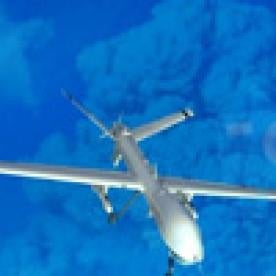Today, members of the Transportation and Infrastructure Committee and Aviation Subcommittee announced the introduction of the Aviation Innovation, Reform, and Reauthorization (AIRR) Act (H.R. 4441). The AIRR Act is a six-year reauthorization of the Federal Aviation Administration (FAA). While the proposed reforms to air traffic control garnered the most attention in the media, the AIRR Act also addressed efforts to integrate civil unmanned aircraft systems (UAS) into the National Airspace System (NAS). The AIRR Act includes UAS-related provisions that:
-
Expedite safe deployment of commercial UAS by creating a risk-based permitting process
-
Promote greater utilization of UAS test ranges
-
Foster development of sense-and-avoid technology at UAS test ranges
-
Establish a streamlined process for the FAA to permit the operation of small UAS for certain uses
-
Direct the FAA to conduct a pilot program to evaluate UAS detection and mitigation technology
-
Facilitate utilization of UAS in support of firefighting operations
-
Direct the DOT Inspector General to assess the FAA’s small UAS registration system and requires FAA to develop and track metrics to assess compliance with and effectiveness of the system
-
Establish a government-industry advisory committee to assess the necessity and feasibility of a low altitude unmanned aircraft system traffic management system
-
Directs DOT to conduct a study on the privacy implications of UAS operations
The AIRR Act incorporates many of the requirements from the prior FAA reauthorization from 2012. However, there are new UAS-related provisions included in the AIRR Act, some of which are discussed below.
Risk-based Permitting
The AIRR Act would require the FAA to establish procedures for issuing permits for certain UAS operations not considered small UAS or addressed by the 2015 small UAS Proposed Rule. Under Section 432 of the AIRR Act, an operator would submit an application and obtain a permit to operate if the FAA determines that (1) the UAS and its operations achieve a level of safety equivalent to other approved UAS; and (2) the applicant has adequate liability insurance.
The FAA would be required to make a decision on the permit within 120 days of receiving a complete application. Permit applications for UAS operations “primarily in direct support of emergency preparedness, response, or disaster recovery” shall be processed on an expedited basis.
In assessing equivalent level of safety, the FAA would consider:
-
The kinetic energy of the UAS;
-
The location of the proposed operation and its proximity to structures, congested areas, persons on the ground;
-
The nature of the operation and any proposed risk mitigation;
-
Any known hazard of the proposed operation and the severity and likelihood of such hazard;
-
Any known failure modes of the UAS, failure mode effects and criticality, and any mitigating features or capabilities;
-
The operational history of the relevant technologies;
-
Any history of civil penalties or certificate actions by the FAA against the permit applicant;
-
Any other safety criteria deemed relevant by the FAA.
If issued, the UAS permit would be valid for a period of five years and constitute approval of both the airworthiness of the UAS and the proposed operation of such system. The UAS permit would be renewable for additional five-year periods.
Low Altitutde UAS Traffic Management
The AIRR Act would require the FAA to establish an advisory committee to evaluate the potential for creating a UAS traffic management system. Within 90 days of enactment, the FAA must assess “the necessity, feasibility, and benefits of establishing unmanned aircraft traffic management systems for airspace between the surface and 400 feet above ground level.” The advisory committee is also tasked with developing recommendations for federal oversight of any proposed UAS traffic management system and prepare a report within one year of enactment of the AIRR Act.
UAS Detection Systems
Safety has always been an consideration of the FAA and industry when moving forward with integrating UAS into the NAS. UAS sightings around airports and by commercial airliners skyrocketed in 2015, drawing the concern of the FAA. Under Section 440, the FAA would be tasked with establishing a pilot program to assess the effectiveness of unmanned aircraft detection systems. Section 440 authorizes the FAA to select at least three airports to implement unmanned aircraft detection systems to detect, locate and track unmanned aircraft and their operators. The FAA would be required to prepare a report on the pilot program within 18 months of enactment of the AIRR Act.
Privacy Review
The AIRR Act charges the FAA with coordinating with federal, state and local officials, and subject matter experts to identify “any potential reduction of privacy specifically caused by integration of unmanned aircraft systems into the national airspace system.” Up to this point, the National Telecommunications and Information Administration of the Department of Commerce has taken the federal lead on UAS and privacy in response to the White House memo “Promoting Economic Competitiveness While Safeguarding Privacy, Civil Rights, and Civil Liberties in Domestic Use of Unmanned Aircraft Systems’’, dated February 15, 2015. While States are largely preempted from legislating in the area of UAS operations, several have enacted legislation related to law enforcement and privacy. At this point, more than 25 states have passed some form of UAS-related legislation.
Conclusion
The last FAA reauthorization bill was passed in 2012 with the FAA Reform and Reauthorization Act of 2012 (FMRA), which called on federal agencies to develop a comprehensive plan to accelerate the integration of civil UAS into the NAS. In 2015, the FAA made progress toward the goals outlined in the 2012 FMRA, using the Section 333 process to approve approximately 3,000 civil UAS operations and promulgating a proposed rule for small UAS. However, many in Congress and in industry believe the FAA has not “fulfilled its mandate” established in the 2012 FMRA and as a result companies are moving research and development outside of the US. While the UAS provisions in the proposed legislation are promising, whether they make it to the final bill is left to be seen. It is our understanding that Chairman Bill Shuster will put the reauthorization legislation on an expedited track, targeting February 11th for the first committee markup.



 i
i

